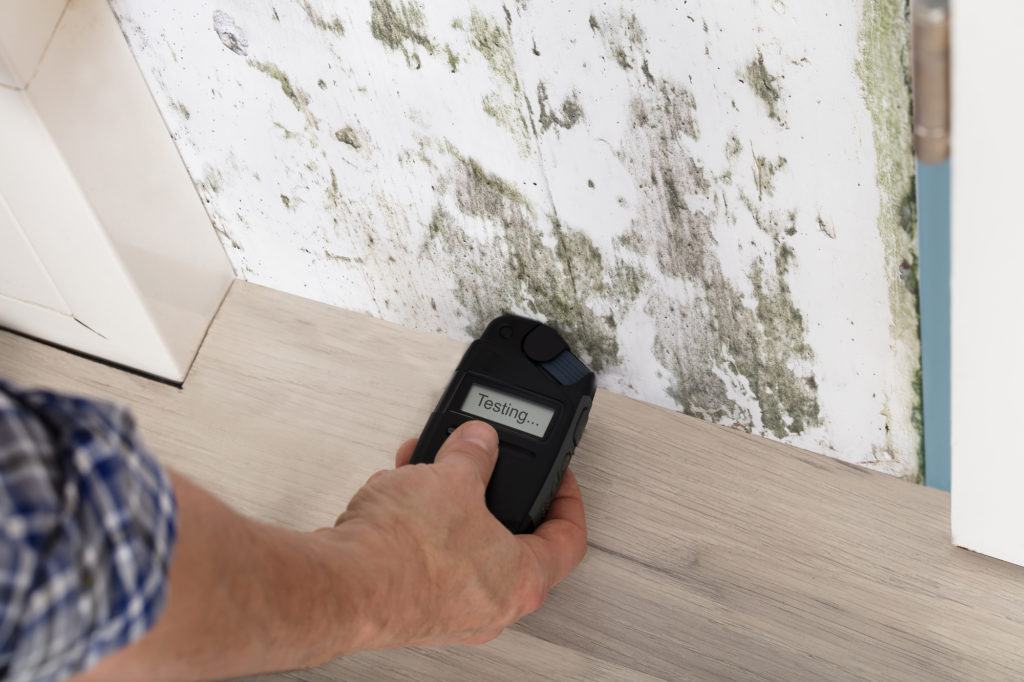Testing Air Quality After Mold Remediation
Testing Air Quality After Mold Remediation
Blog Article
Your Ultimate Guide to Post Mold Remediation Techniques
In the results of mold problem, understanding just how to efficiently get rid of the mold and mildew and avoid its reoccurrence is critical for keeping a healthy interior environment. From choosing the appropriate cleansing and decontaminating techniques to applying strategies for long-lasting mold prevention, each action in the removal journey plays an important duty in guaranteeing a successful end result.
Understanding Post-Mold Remediation Process
After finishing the mold and mildew removal process, it is crucial to comprehend the post-mold removal strategies that are essential to guarantee a detailed and reliable cleaning. Once the mold and mildew has actually been eliminated, the next step entails cleansing and decontaminating the influenced areas to stop any type of regrowth of mold. This consists of making use of specialized cleaning representatives to wipe down surfaces and eliminate any remaining mold and mildew spores. It is necessary to dry out the location entirely to inhibit the development of mold in the future (Post Mold Remediation Report). Correct ventilation and dehumidification can assist in this process.
Moreover, conducting a last inspection post-remediation is essential to guarantee that all mold and mildew has actually been effectively eradicated. If the examination discloses any kind of lingering mold and mildew, added remediation might be required.
Efficient Cleaning Up and Sanitizing Techniques

Avoiding Future Mold And Mildew Development

Significance of Appropriate Ventilation
Appropriate air flow plays a vital role in avoiding moisture buildup, a key variable in mold growth within indoor environments. Reliable ventilation systems assist get rid of excess humidity from the air, reducing the possibilities of mold and mildew spores locating the dampness read this post here they need to spread and sprout. Without appropriate air flow, indoor areas can become a reproduction ground for mold, leading to possible health and wellness dangers and architectural damage.
By making sure proper air circulation, ventilation systems can additionally help in drying out moist locations quicker after water damage or flooding cases, further deterring mold and mildew development. After mold remediation. In areas like shower rooms, kitchens, attics, and cellars where moisture degrees have a tendency to be greater, setting up and maintaining effective ventilation systems is essential in protecting against mold and mildew infestations

Tracking and Upkeep Tips
Offered the vital duty that appropriate ventilation plays in protecting against mold and mildew development, it is critical to establish reliable tracking and maintenance pointers to make sure the continued functionality of air flow systems. Normal inspections of air flow systems ought to be carried out to look for any indications of clogs, leaks, or breakdowns that can hinder proper airflow. Surveillance humidity degrees within the property is also vital, as high moisture can add to mold growth. Installing a hygrometer can aid track humidity levels and alert property owners to any type of spikes that may require interest. Additionally, making certain that air filters are regularly cleaned up or changed is essential for maintaining the efficiency of the ventilation system. Implementing a timetable for regular maintenance jobs, such as air duct cleaning and HVAC system inspections, can assist stop concerns before they rise. By remaining positive and conscientious to the problem of air flow systems, homeowner can effectively mitigate the threat of mold and mildew regrowth and keep a healthy indoor environment.
Final Thought
In verdict, post-mold removal methods are necessary for making sure a tidy and secure atmosphere. Understanding the procedure, applying effective cleaning and disinfecting approaches, avoiding future mold and mildew growth, maintaining appropriate ventilation, and routine monitoring are all vital action in the remediation procedure. By complying with these standards, you can efficiently eliminate mold and mildew and prevent its return, working or advertising a healthy living space for all owners.
In the aftermath of mold infestation, knowing exactly how to properly eliminate the mold and prevent its reoccurrence is paramount for keeping a healthy and balanced indoor atmosphere. When the mold and mildew has been go right here gotten rid of, the next step involves cleansing and sanitizing the influenced locations to protect against any regrowth of mold - Post Remediation verification. After removing visible mold development, it is essential to clean all surface areas in the damaged location to remove any type of remaining mold spores. To further improve mold avoidance measures, it is crucial to deal with underlying problems that at first led to mold advancement.Provided the critical duty that correct air flow plays in preventing mold growth, it is vital to develop reliable tracking and maintenance pointers to make sure the ongoing capability of ventilation systems
Report this page